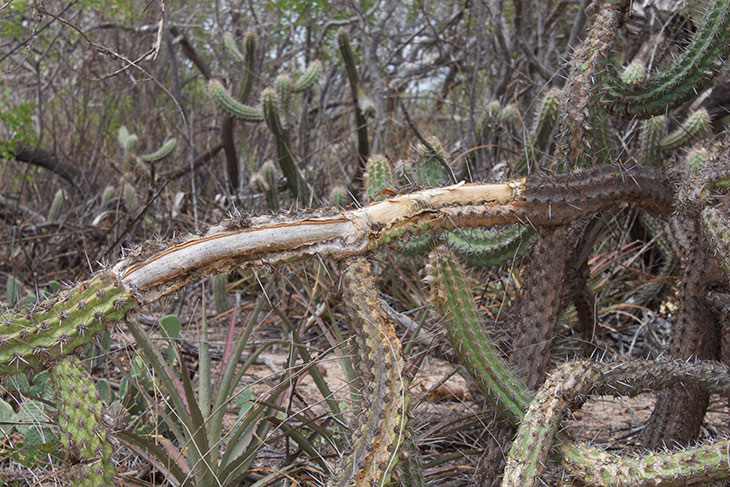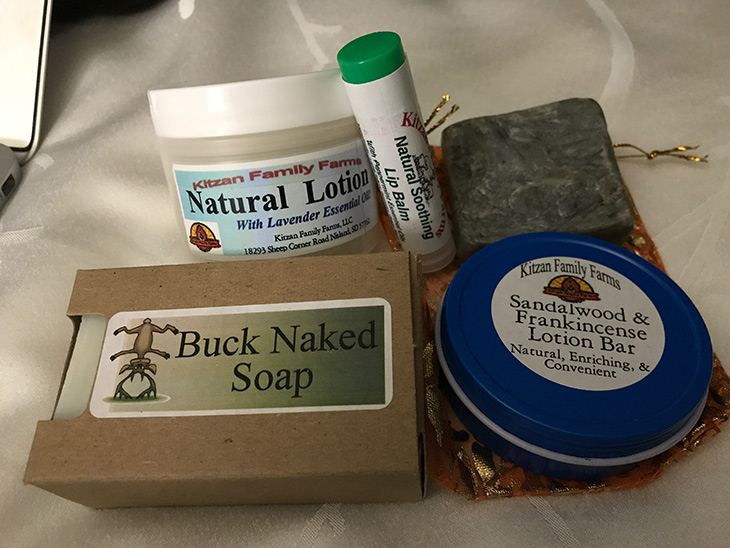In Texas, a Nubian Ibex breeding buck and kids bred for the abundant hunting market.
As the recipient of a 2017 Nuffield Scholarship supported by AWI, Felicity McLeod from Wentworth in western NSW has investigated how pastoral wool enterprises can potentially increase income through diversification.
Felicity McLeod was motivated to investigate approaches to enterprise diversity after prolonged drought on her family’s 121,000-hectare beef, sheep and rangeland goat enterprise near Wentworth, NSW.
“If ever there was a time to study diversification in the rangelands then now is that time. However, the drought was not the only driver for my studies; it was also about managing for the future and improving long-term economic viability and sustainability in an unpredictable climate,” Felicity said.
“I returned from my Nuffield research to mustering stock for trucking out. Normally, the task would have been lamb marking and crutching, but in the previous 18 months a large portion of our ewes and lambs and nearly all our cattle had been sold due to a lack of rain.
“Unreliable rainfall is of course not new in the Western Division of NSW. Management of ground cover and the availability of water for livestock use are the main limiting factors facing pastoralists in the region.

In Brazil, goats remove the thorns from rope cactus allowing sheep to eat the plant’s flesh.
“At times, goat sales make up more than 50% of the annual income for our business. We also have sections of Popiltah and Popio lakes, which fill following flood events in Queensland and we capitalise on the moisture in the deep clay soils by planting crops on the lake beds.
“I wanted to use my Nuffield Scholarship to explore possibilities for these and other types of enterprise diversification, and to find out the viability of various approaches back home.”
Felicity travelled to Brazil, Denmark, India, New Zealand, South Africa, Qatar, United States and the United Kingdom. She met with farmers who had diversified their livestock enterprises and her report (released in October) details what they considered critical factors for success, along with several challenges and pitfalls.

In New Zealand, glamping-style tourism adds extra income to a farm business. PHOTO: brians101
The report details novel approaches to multi-species diversification including deer, goats and more exotic species. It concludes that while feed and water availability are the first considerations, market access and evaluation of animal behaviour along with the suitability of particular breeds to country type and topography are also key factors.
“In Texas I visited properties where goats complement the grazing of Merino sheep and Angus cattle. Goats fit well into their Merino production system given goats’ browsing habits and palate for trees, shrubs and rougher vegetation. They can also reduce vegetable matter in fleeces and control weeds and brush allowing better grass growth for the Merinos.
“In the Juazeiro region of Brazil, I met a farmer whose in-depth understanding of the local desert plants and interrelationships between livestock species led to successful diversification for his business. Amazingly, his goats remove the thorns from rope cactus, allowing his sheep to benefit from the flesh of the plant, which has a protein content of 8%.
“I met a farmer in Texas who, as well as a running a more traditional enterprise, has also been raising a desert adaptive goat antelope – the Nubian Ibex – which are sold into Texan game parks for hunting. The kids at six months sell for US$2,500 to $US4,000, while adults can make $8,000 a head. At another ranch I visited, hunting licences make up at least 50% of the business income, supplementing its sheep, goat and cattle operations.”

In South Dakota, tallow from a farm’s sheep is used to make soaps and skin products.
The report also details a range of approaches to value-adding, which have allowed producers to turn what was once considered waste product into an alternative revenue stream.
“In South Dakota, USA, I met a sheep meat producer who had started using tallow from sheep to make soaps and skin products, as well as toys and rugs from wool and skins. While a modest revenue stream, the concept of turning waste into a money-making product is appealing and has wider application across a range of businesses,” Felicity said.
The report also explores examples Felicity saw for improving on-farm efficiencies and how to manage predation.
“Ultimately, there are many options when investigating enterprise diversity, and many considerations that must be taken into account prior to commitment. The opportunities are there, but success depends on a well-researched approach which is tailored to the individual’s farm, business, and resource availability,” Felicity added.






